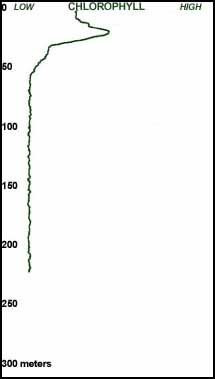
 |
|
Work at Sea |
Data collection at sea is a complicated process, especially given that the science is done in a relatively small lab space on a rolling ship. Make sure your equipment is strapped down! Work at sea is usually conducted in shifts. On our cruise we have two teams that work 12 hours per day, every day during the 14-day voyage. Let’s look at how the scientists are collecting their data and give them a hand... |
| Collecting Water at Depth |
|
|
One very important step in the data collection process is getting water from different depths onto the ship so it can be analyzed. To do this, we use a rosette frame with bottles attached to it. (Click here to see photos of the frame). At each station, the rosette is sent over the side of the ship and lowered to a designated depth. Depending on the area, we lower our rosette from 15 to 300 meters. On the way down, a fluorometer measures in-water chlorophyll concentrations and a CTD provides temperature, salinity and depth data. |
 |
As the rosette is raised back up through the water column, we trigger the bottles to close and “grab” water at certain depths. We can pick where we want to collect water on the way up by looking at the temperature, salinity and chlorophyll profiles that were generated on the way down. Once the rosette is hoisted back onto the deck of the ship, we can help Ilana gather the water samples for analysis. |
 |